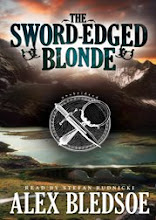
If you watch the History, Discovery or National Geographic channels around Halloween, when all things vampiric and Draculoric are fair game, you’ve probably seen and heard Dr. Elizabeth Miller. She is an expert on Bram Stoker and the novel Dracula, including its history and inspirations. Her many published books include Bram Stoker's Notes for Dracula: A Facsimile Edition, and Dracula: Sense & Nonsense. Professor Miller was kind enough to answer some questions for me regarding vampires in folklore and literature.
Alex: It seems as if the vampire in traditional folklore was seldom a fully conscious, will-directed creature. At what point did they become so in the popular imagination?
Dr. Miller: This started to happen as the vampire migrated from folklore to literature. The 18th-century reports about vampire sightings in central and eastern Europe coincided with (and may have contributed to) a rising interest in Gothic literature, first in Germany and later in the century, in England. The Gothic movement was part of the broader period of Romanticism, with its challenges to rationalism and its shift of philosophical emphasis to subjectivity, emotion, intuition and the imagination. The adoption of the figure of the vampire was inevitable. Appearing first as a type of "demon lover" in German poetry, the vampire made its way to England where it was embraced by the Romantic poets and shapeshifted into a full-blown aristocrat.
Dracula is the gold standard, but not the first "aristo-vampire." What prompted this shift from peasant revenent to high-born demon?
The first vampire fiction in English literature was The Vampyre. Published in 1819, The Vampyre was written by John William Polidori, who had served as Lord Byron's personal physician for a time until disputes brought an end to the relationship. Polidori clearly modeled his vampire, Lord Ruthven, on Byron. That, along with the fact that many thought that Byron had written the story, gave it instant popularity. It began what was essentially a "vampire craze" in the theatres of London and Paris during the 1820s. Lord Ruthven is the prototype of the aristocratic vampire.
During the 19th century, interest in the vampire continued, with Polidori's Ruthven as the model. By the time Bram Stoker started Dracula, a number of literary conventions for the vampire were already in place: the vampire is of an old, aristocratic (and usually foreign) family; the vampire is tall, dark, spectral, and dressed in black; the vampire possesses sharp fangs which leave two bite marks on the victim; the vampire is a creature of unusual physical strength; the vampire has a strong seductive power over women; the victim's response to the vampire is ambivalent, revealing both attraction and repulsion; and the most effective way to destroy a vampire is to drive a wooden stake through its heart.
In my research folkloric vampires seem to be solitary creatures often linked to their families, yet the film version of In Search of Dracula (based on the landmark book by Raymond T. McNally and Radu Florescu) says vampires meet on St. Andrew's Eve (November 29). Is this legitimate folklore? If so, why did the vampires meet?
I have no idea of the source of the statement re vampires meeting on St Andrew's Eve. I know that it is widespread in general folklore that evil is at its strongest on the eve of a saint's day. Indeed, Stoker encountered such a piece of lore in Transylvanian Superstitions by Emily Gerard (1885). She stated that St George's Eve was believed to be a time for the gathering of witches. No mention of vampires, however. Stoker uses this in his novel, with reference to "all the evil things in the world". I suspect the statement in the film was "wishful thinking."
There are many odd ways to identify and/or repel vampires. What's the strangest you've come across?
There are two that Stoker listed in his notes for Dracula but decided not to use in the novel:
"Painters cannot paint him - their likenesses always like someone else," and "Insensibility to music"
Vampires are now not just appealing to teenagers, but in the wake of the Twilight series they are teenagers. What do you see as future trends for the popular image of the vampire?
Vampires are likely to become so commonplace that they will lose much of their appeal. The down-side of romanticizing the vampire is that it loses the grip on that part of our imaginations that are attracted to horror.
Thanks to Professor Miller for answering my questions. You can find her newest work, Notes for Dracula, here.




















